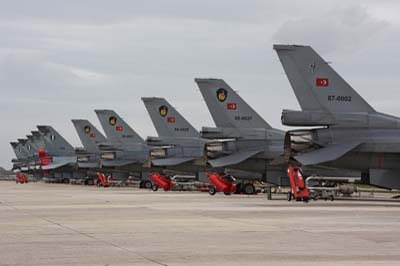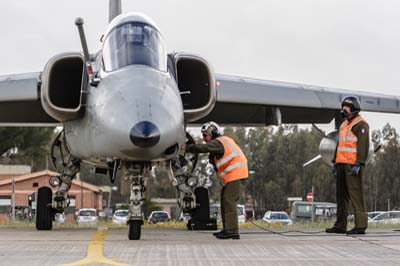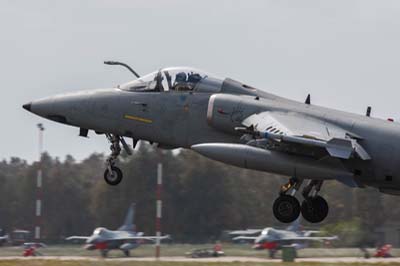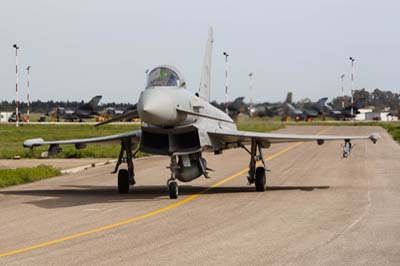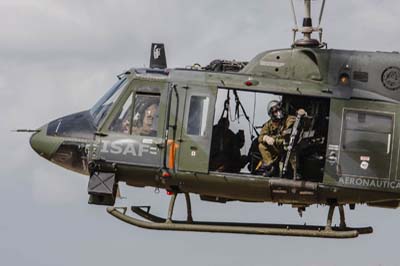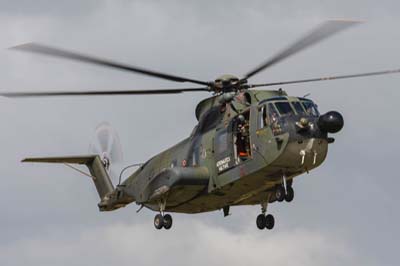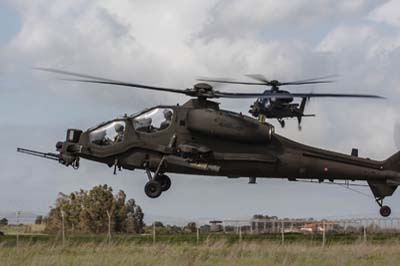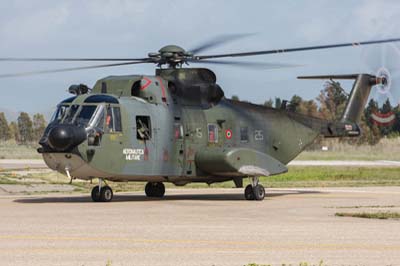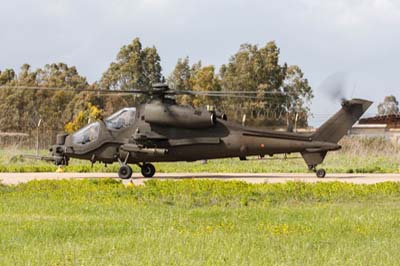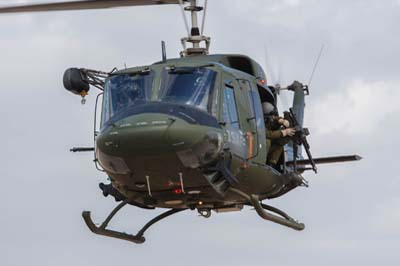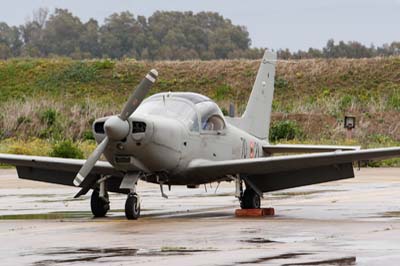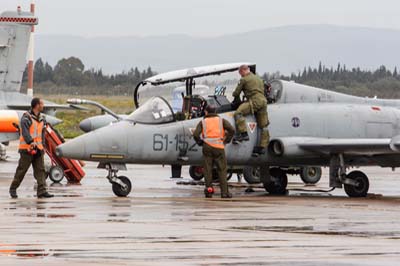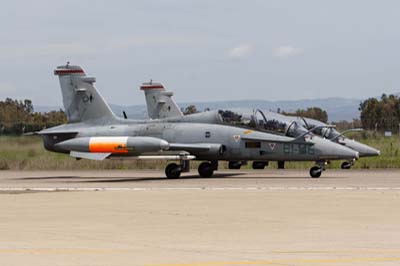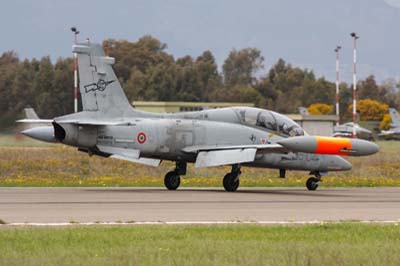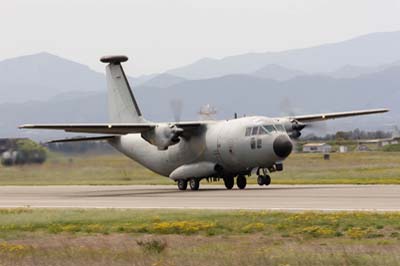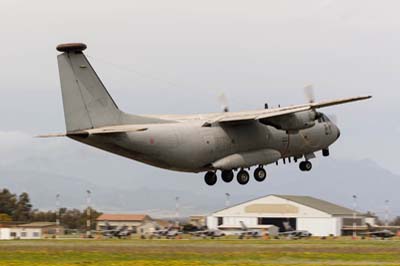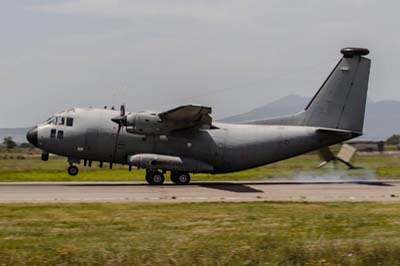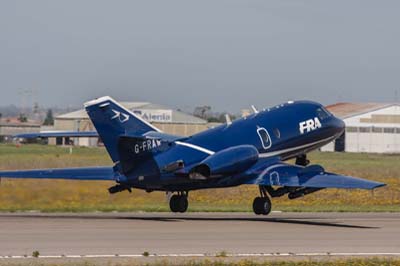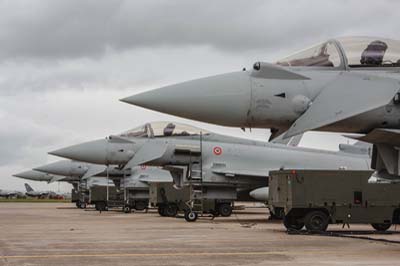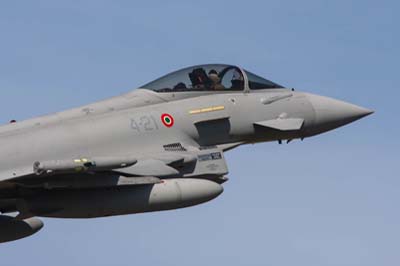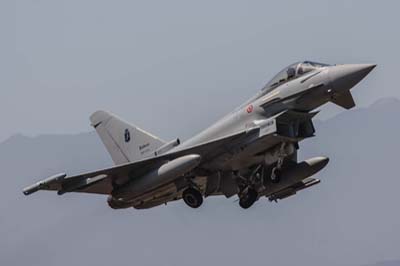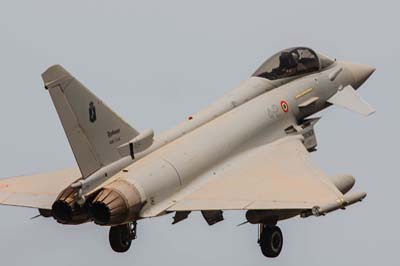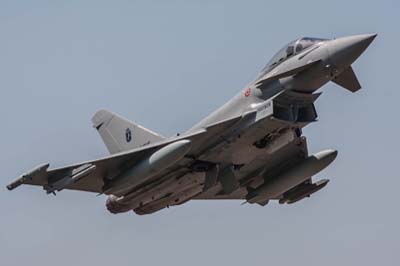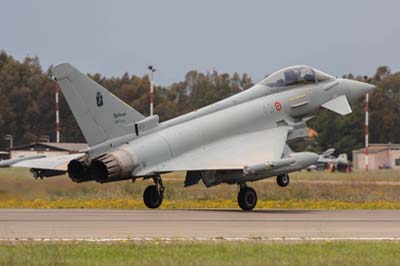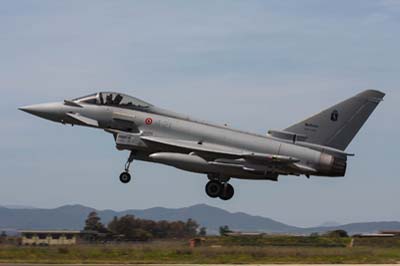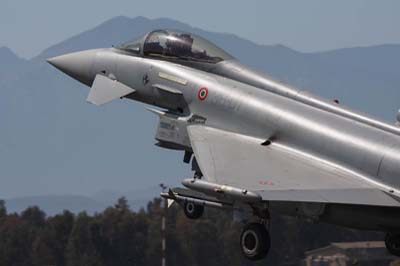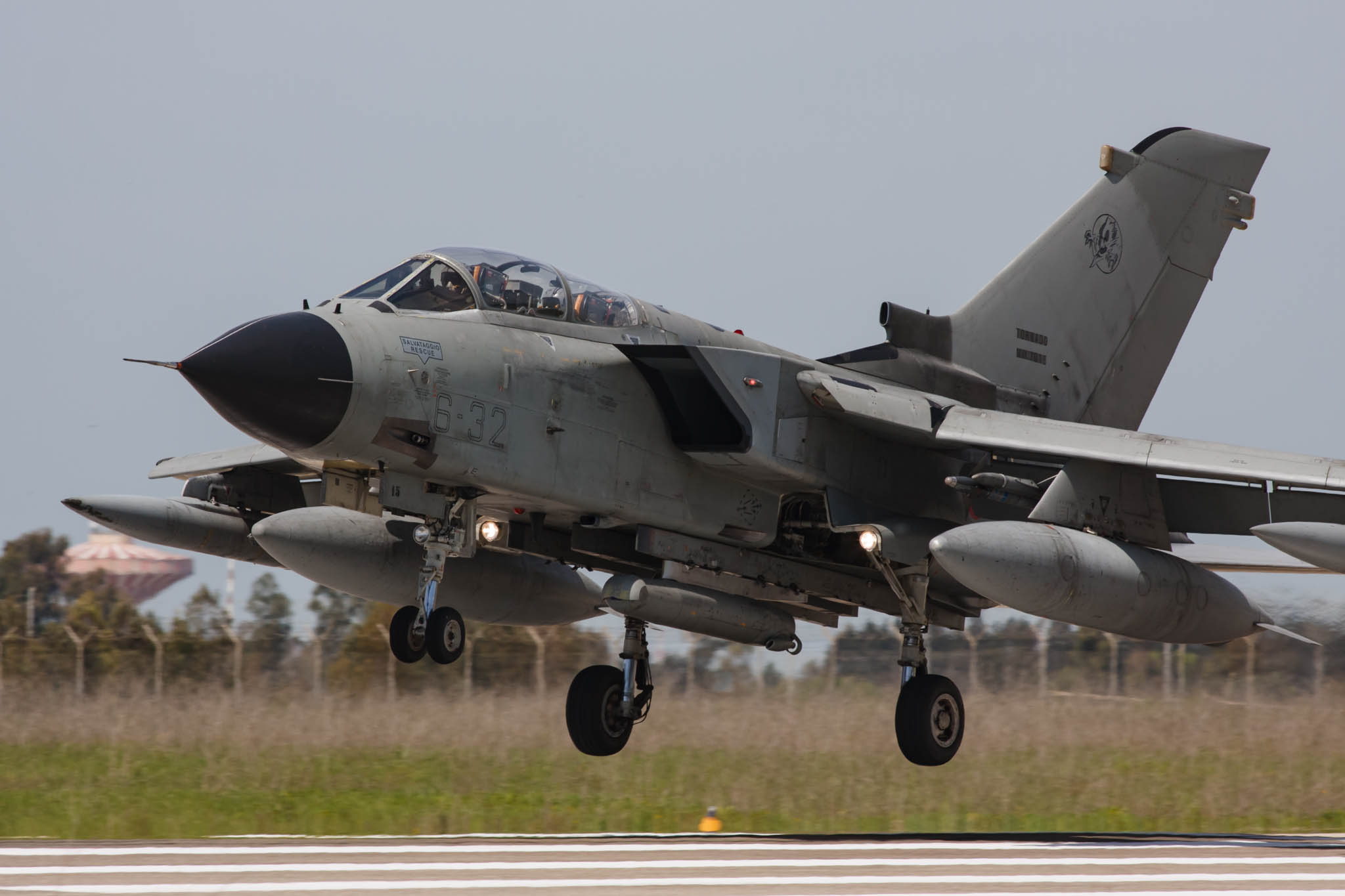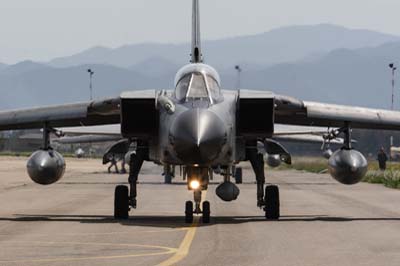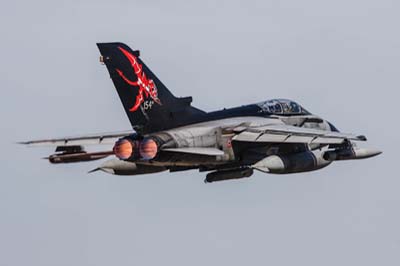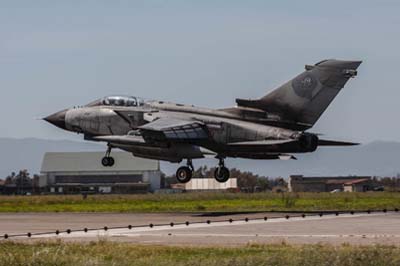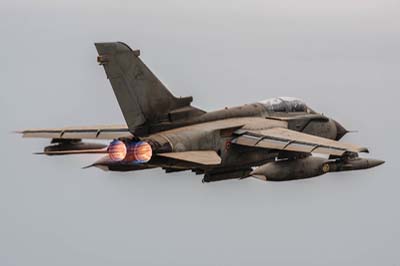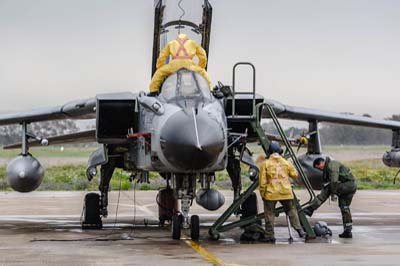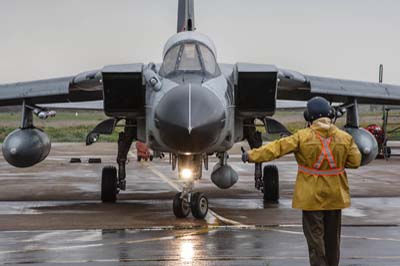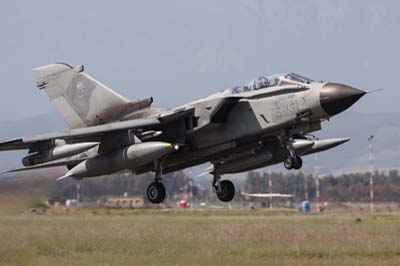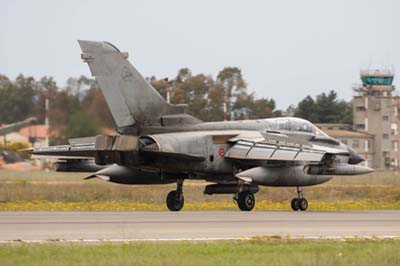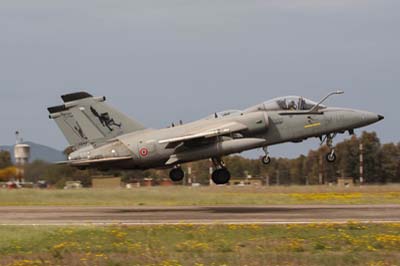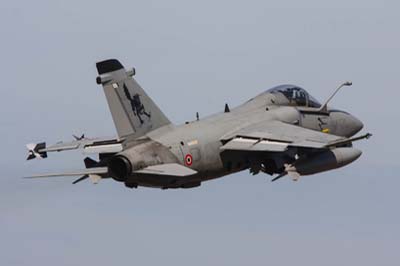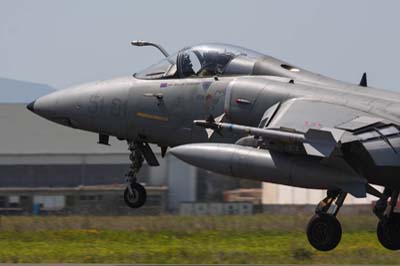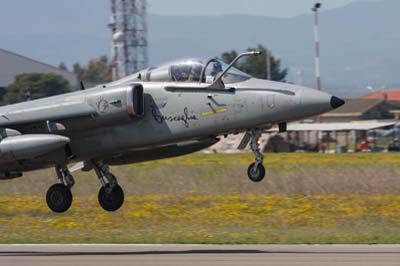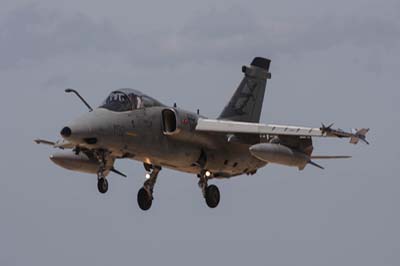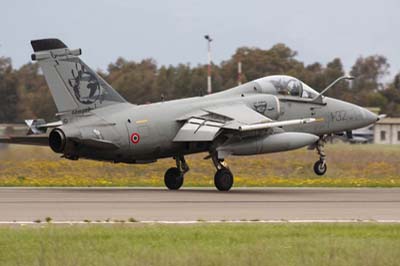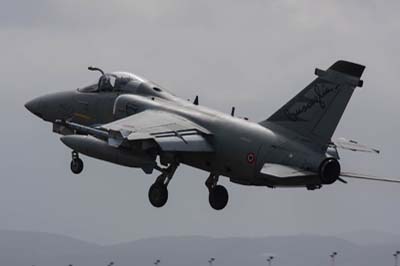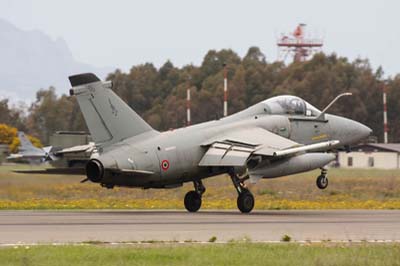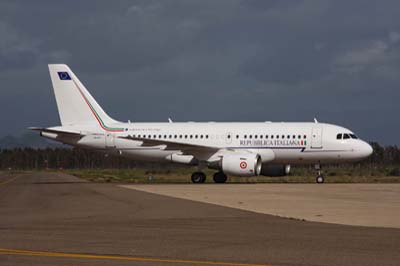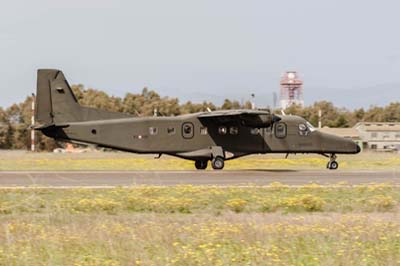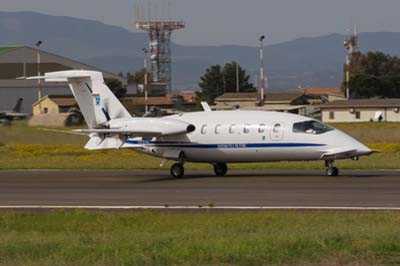Exercise 'Spring Flag 2008'
Decimomannu Air Base
Sardinia
April 1-18, 2008
|
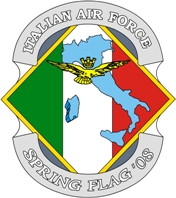 Training for a Crisis - Philip Stevens reports Operating under a United Nations mandate the Italian Air Force (Aeronautica Militare Italiana or AMI) are working with a coalition force of seven countries to resolve a crisis between the neighbouring countries of Carbonium and Trinacrium. It's the annual Spring Flag (SF08) exercise and this is the scenario for which the AMI started planning, almost as soon as the dust had settled in Sardinia following last years Spring Flag (SF07) held in May 2007.
Training for a Crisis - Philip Stevens reports Operating under a United Nations mandate the Italian Air Force (Aeronautica Militare Italiana or AMI) are working with a coalition force of seven countries to resolve a crisis between the neighbouring countries of Carbonium and Trinacrium. It's the annual Spring Flag (SF08) exercise and this is the scenario for which the AMI started planning, almost as soon as the dust had settled in Sardinia following last years Spring Flag (SF07) held in May 2007.
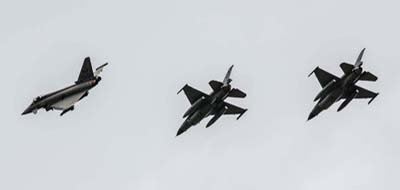 Organised by the Air Force Operational Command (COFA) in Poggio Renatico (Ferrara), the aim of the AMI's main training exercise is to test and prove its capabilities to plan and deploy a large 'expeditionary' force for peace support. On April 1, 2008 the Joint Force Air Component Command (JFACC) was activated at Poggio Renatico, in place of COFA to control the exercise. A Deployable Combined Air Operations Centre (DCAOC) was also assembled in Bari. During the first week of the three week exercise a 'Coalition Force' arrived at a Deployable Operating Base (DOB) at Decimomannu air base in Sardinia (named Carbonium for the exercise). With almost 2,000 people and their equipment to be put into place this is no easy matter. With all the aircraft in position at their various operating bases by the end of the first week, aircrew are given a briefing to make sure everyone is aware of the capabilities of the aircraft and systems.
Organised by the Air Force Operational Command (COFA) in Poggio Renatico (Ferrara), the aim of the AMI's main training exercise is to test and prove its capabilities to plan and deploy a large 'expeditionary' force for peace support. On April 1, 2008 the Joint Force Air Component Command (JFACC) was activated at Poggio Renatico, in place of COFA to control the exercise. A Deployable Combined Air Operations Centre (DCAOC) was also assembled in Bari. During the first week of the three week exercise a 'Coalition Force' arrived at a Deployable Operating Base (DOB) at Decimomannu air base in Sardinia (named Carbonium for the exercise). With almost 2,000 people and their equipment to be put into place this is no easy matter. With all the aircraft in position at their various operating bases by the end of the first week, aircrew are given a briefing to make sure everyone is aware of the capabilities of the aircraft and systems.
For added realism and a change from SF07 when both opposing forces operated from Decimomannu, another DOB was set up for the 'Opposing Force' (OpFor) at Trapani air base in Sicily (Trinacrium). Col Luca Capelli, Director of Operations for SF08 set out to run the exercise according to a real situation when a coalition under a United Nations mandate would deploy a force to resolve a crisis. "The first phase is a show of force, then if required the pressure is increased. It's the same at Spring Flag. During the first three days we have a show of force period, to convince the enemy to stop the hostilities. Unfortunately this does not always work." On the fourth day the coalition was subject to a simulated hostile act when it is reported that one of aircraft has been shot down. "We then move to an offensive phase and an attack on Trinacrium (Trapani air base) is planned. |
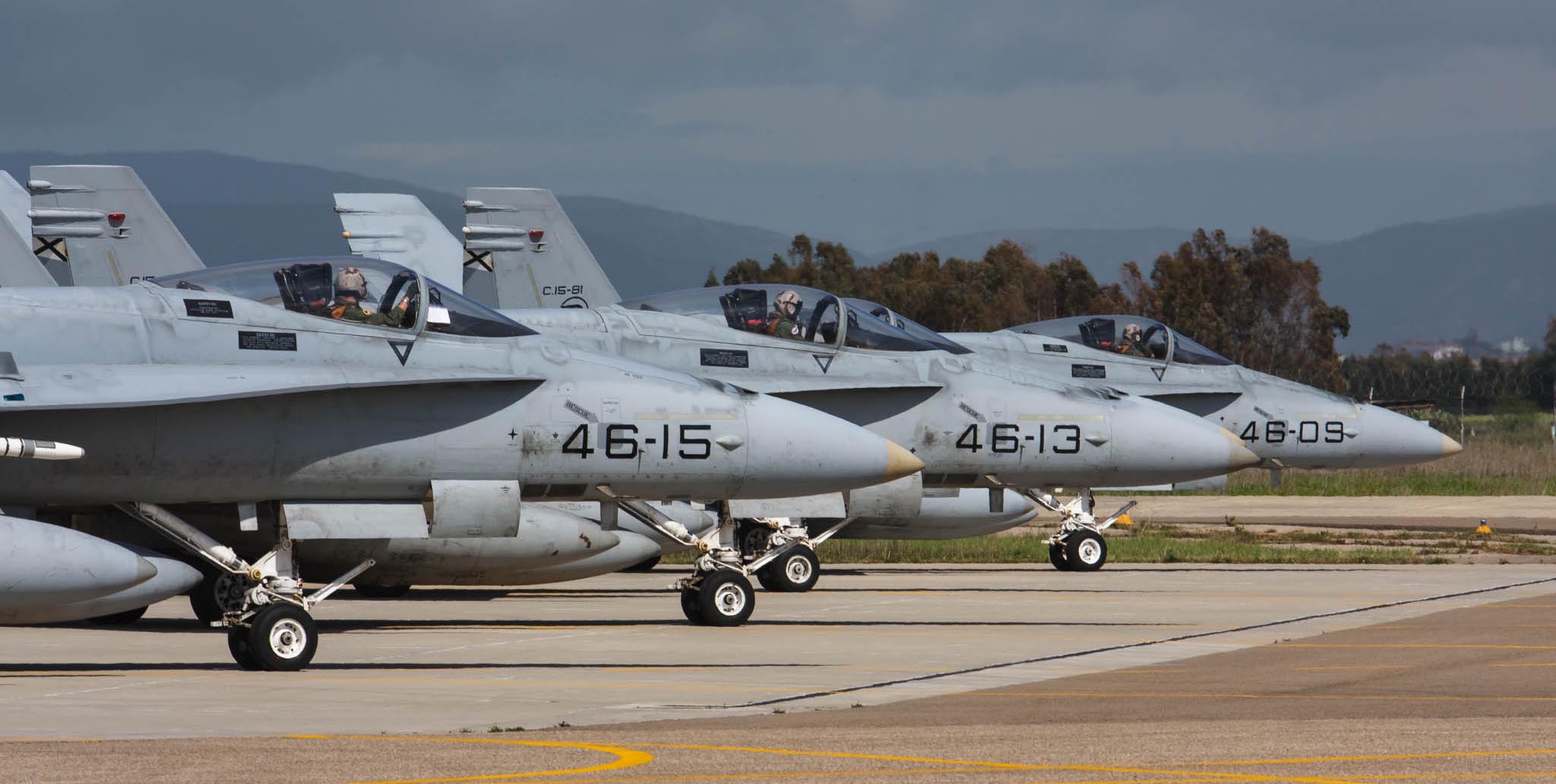 |
| Three Spanish Air Force McDonnell Douglas F/A-18A Hornets line up at the runway holding point awaiting their time to launch. |
The Air Assets Involved
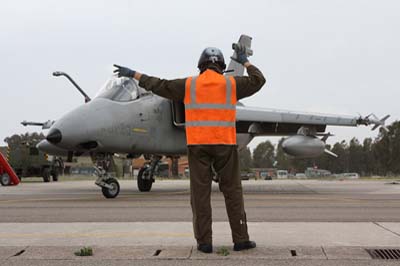 The 'Coalition Force' based at Decimo' comprised of 43 aircraft plus some spares;
The 'Coalition Force' based at Decimo' comprised of 43 aircraft plus some spares;
5x Hellenic Air Force Lockheed Martin F-16C Fighting Falcon (330 Mira from Nea Ankhialos)
5x Turkish Air Force Lockheed Martin F-16C/D Fighting Falcon (142 Filo from Akinci)
4x Spanish Air Force McDonnell Douglas F/A-18A Hornet (Ala 46, 462 Esc from Gando)
4x German Air Force Panavia PA-200 Tornado ECR (JBG 32 from Lechfeld)
1x Dassault Falcon 20EW (FR Aviation from UK)
With the AMI and Aviazione dell' Esercito or AVES (Italian Army) were;
4x Alenia-Aermacchi-EMBRAER AMX (51° Stormo/132° Gruppo from Treviso)
6x Panavia PA200 Tornado IDS (6° Stormo from Ghedi)
4x Eurofighter EF2000 Typhoon (4° Stormo/9° Gruppo from Grosseto)
3x Eurofighter EF2000 Typhoon (36° Stormo/12° Gruppo from Gioia del Colle)
4x AerMacchi MB-339CD (61° Stormo/212° Gruppo from Lecce)
2x Agusta-Bell AB.212AM (9° Stormo/21° Gruppo from Caserta)
2x Sikorsky HH-3F Pelican (15° Stormo from Pratica di Mare)
1x Lockheed C-130J Hercules (46° Brigata Aerea/2° Gruppo from Pisa)
1x Agusta-Boeing CH-47C Chinook (26° Gruppo Esercito from Viterbo)
3x Agusta A.129C Mangusta (5° Reggimento Esercito from Casarza)
A French Air Force Boeing E-3F AWACS of the 36th Airborne Early Warning Squadron flying from its base at Avord flew in support of coalition forces. They have been operating the E-3F since 1990. The E-3F can support packages of up to 80 aircraft which include fighters, tankers, transports and helicopters.
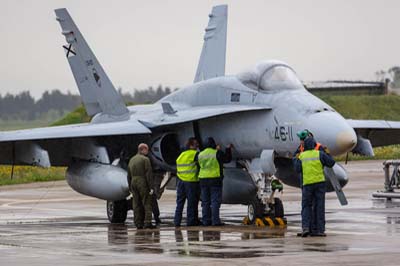 OpFor consisted of a combined force of 32 aircraft mostly operating from Trapani air base;
OpFor consisted of a combined force of 32 aircraft mostly operating from Trapani air base;
Lockheed Martin (General Dynamics) F-16ADF Fighting Falcon (5° Stormo from Trapani)
2x Lockheed Martin (General Dynamics) F-16ADF Fighting Falcon (37° Stormo from Cervia)
6x PA200 Tornado ECR (50° Stormo from Piacenza)
3x McDonnell Douglas-British Aerospace AV-8B Harrier II of Gruppo Aereo di Grottaglie of the Marina Militare (Italian Navy)
1x Fiat G-222VS (14° Stormo from Pratica di Mare) in the signals intelligence (ELINT/SIGINT) role.
1x NATO Boeing E-3A Sentry AWACS and a 14° Stormo/71° Gruppo) operating from Geilenkirchen in Germany.
A United States Air Force Boeing KC-135R Stratotanker from 100ARW normally based at RAF Mildenhall was operating from Sigonella on Sicily due to the availability of support staff, is utilised for air to air refuelling.
3x Aermacchi SF-260EA (70° Stormo from Latina) were operating from Alghero. |
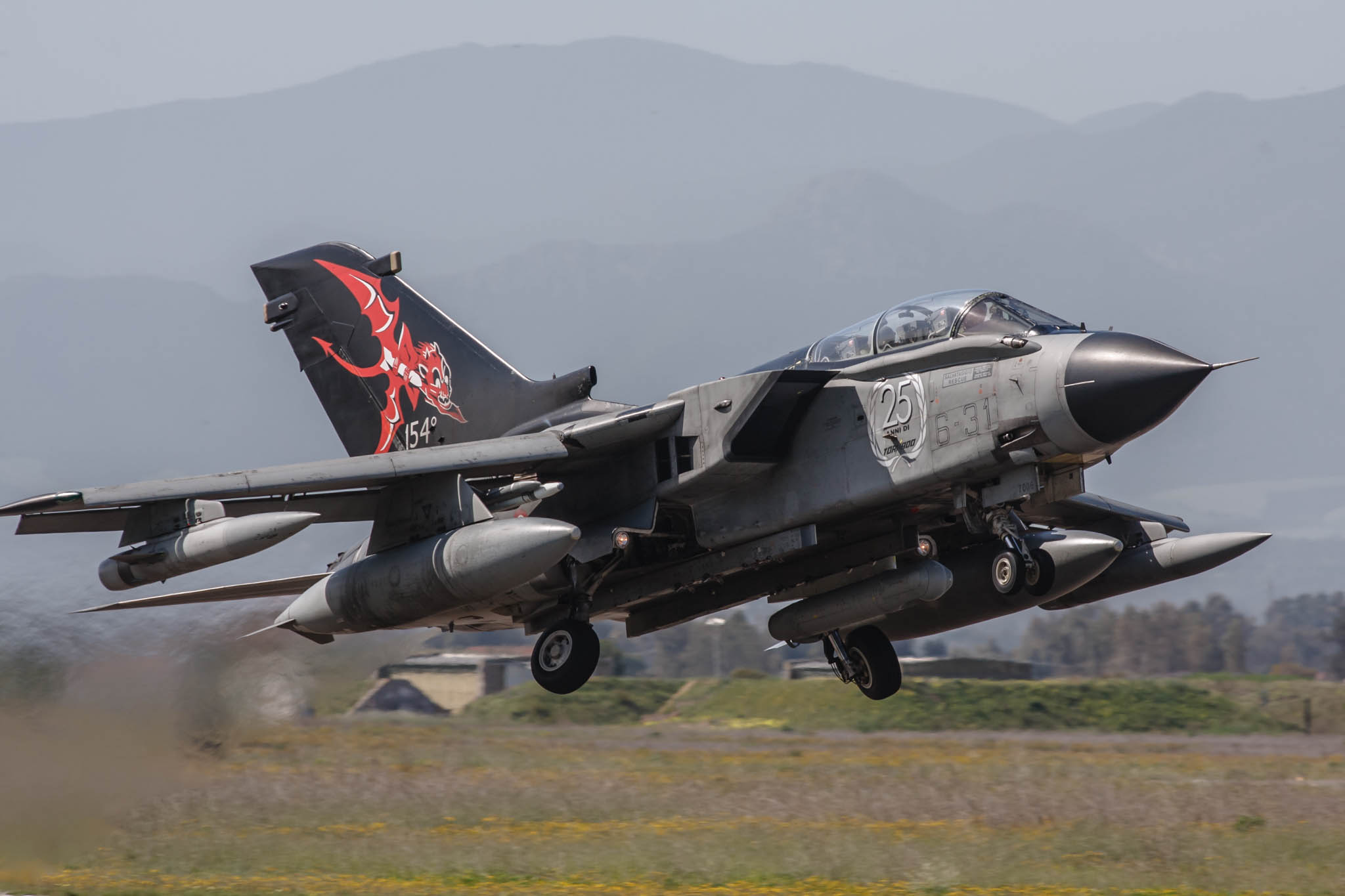 |
| Specially marked Tornado IDS (MM7006 '6-31') with 154° Gruppo of 6° Stormo departs Decimo' |
Events Escalate
A Composite Air Operation (COMAO) is scheduled for each morning, they depart in waves to the precise times of their tasking. The COMAO's can take up to three hours for all aircraft to be airborne with sorties lasting up to four hours in duration. Eight days of aerial sorties are planned starting in the second week on Monday April 8 (day 1). A COMAO involving increasing numbers of aircraft is planned for each day.
24 hours before each mission pilots are given their Air Tasking Order (ATO) as part of their briefing for the following day's scenario. Mission planning using the sophisticated computer software enables pilots to plan their sorties quickly and effectively. Pilots are able to print off aerial maps with the Airspace Control Order (ACO) already marked, saving them at least 40 minutes of planning time.
Pilots on day 1 use their flying time to familiarise themselves with the operational areas. It is also used for show of force missions, as part of the strategy to resolve the crisis between the two opposing nations.
Casualty Evacuation (CASEVAC)
On day 2 and a Casualty Evacuation (CASEVAC) takes place. It is planned in co-operation with the AMI, Italian Army (Aviazione Dell' Esercito or AVES), Red Cross and Italian Ministry of Foreign Affairs (Ministero degli Affari Esteri). Three pairs of HH-3F, AB.212AM and A.129 helicopters all take part in an operation over Sardinia to rescue simulated civilian casualties, embassy officials with media representatives. The injured are carried by AB.212 back to base where a C-130J of the AMI's 46° Air Brigade (Brigata Aerea), is waiting to transfer them to Rome for hospital treatment. |
Left to right: One of two AB.212AM (MM81375) from 9° Stormo/21° Gruppo based at Grazzanise were in operation most days for CASEVAC operations. Under the US-led Operation Enduring Freedom, ISAF is based at Kabul and tasked with providing security in Afghanistan.
HH-3F Pelican (MM80974 '15-01') of 15° Stormo from Pratica di Mare seen returning from the mornings CSAR mission.
A pair of A.129C Mangusta's 'Mongoose' (MM81408 coded E.I.938) from 5° Reggimento Esercito based at Casarza returning to Decimo'.
C-130J Hercules (MM62186 '46-51') of 46° Brigata Aerea/2° Gruppo based at Pisa seen here transporting the simulated casualties to Rome at the end of the CASEVAC operation.
|
By day 4 and despite poor weather causing a COMAO to be cancelled, the scenario 'hots' up. Mission planners and aircrew have to respond to a 'shooting down' of a coalition aircraft. An AMI Tornado is tasked to fly a reconnaissance mission to gather intelligence for an air-to-ground 'attack' on OpFor forces at Trapani. Up against Ground Based Air Defences (GBAD) using Hawk, Stinger and Skyguard air defence systems with up to 32 fighter aircraft, this is now a very challenging scenario.
Combat Search And Rescue (CSAR)
As with all conflicts a number of events are occurring simultaneously and multiple operations have to be tasked. If a pilot is shot down a Combat Search And Rescue (CSAR) mission should follow, in reality these can be put in to operation from between 30 minutes to three days. During Spring Flag frequent CSAR operations were tasked and flown by two HH-3Fs, one in CSAR configuration the other with a medical team, with two A.129 Mangusta's for force protection. |
Left to right: HH-3F Pelican (MM81337 15-25) of 15° Stormo, 85° Gruppo in CSAR configuration.
A.129C Mangusta (MM81408 E.I.938) from 5° Reggimento Esercito.
A.129C Mangusta's (MM81399 E.I.929 and MM81423 E.I.953). The A.129C is armed with a Lucas chin mounted 12.7mm machine-gun and can carry Sidewinder, Stinger and Hellfire missile systems.
AB.212AM (MM81375) from 9° Stormo/21° Gruppo.
|
Slow Mover Interception (SMI)
A Slow Mover Interception (SMI) mission was flown using a SF-260EA of 70° Stormo which is normally based at Latina but was operating from Alghero in North Western Sardinia. Two 61° Stormo MB-339CDs were tasked for this interception mission. The MB-339CD also flew Combat Air Patrol (CAP) missions during SF08. Based at Lecce their role with (61° Stormo/212° Gruppo) Flying Training School is to provide training for air to air and air-to-ground air defence operations which includes SMI. |
Left to right:
This SF-260EA (MM55114 '70-21') was one of three based at Alghero and was seen during a brief visit to Decimo' during day 4 of the air campaign. The SF-260EA entered service in 2006 at 70° Stormo Flight Training School at Latina.
Groundcrew preparing MB-339CD (MM55082 '61-152') for another mission.
Two MB-339CDs (MM55078 '61-146' and MM55086 '61-156') of 61° Stormo/212° Gruppo from Lecce taxiing out for the SMI exercise.
MB-339CD (MM55076 '36-04')
|
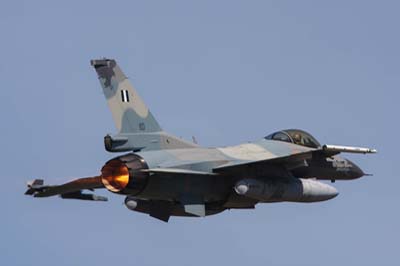
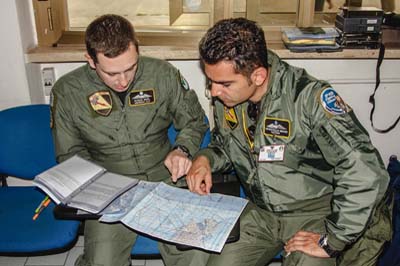 Each national force had a detachment commander whose role was to coordinate its team to make sure each individual force were properly integrated in to the whole. The Hellenic Air Force detachment commander Major G Marinopoulos had a team of 47 personnel, including eleven pilots for the five F-16Cs at SF08. Having no complaints, "everything is going well" Maj Marinopoulos was happy with the results of his pilot's sorties and how the exercise was progressing. By day 5 they had flown Combat Air Patrols (CAP) with Italian Typhoons, as well flying missions in the Defensive Counter Air (DCA) role and as Offensive Air Assets (OAA) in the COMAO. "We have provided force protection, sweep and escort." The following day they were tasked to aerial refuel with a USAFE KC-135R during the days COMAO.
Each national force had a detachment commander whose role was to coordinate its team to make sure each individual force were properly integrated in to the whole. The Hellenic Air Force detachment commander Major G Marinopoulos had a team of 47 personnel, including eleven pilots for the five F-16Cs at SF08. Having no complaints, "everything is going well" Maj Marinopoulos was happy with the results of his pilot's sorties and how the exercise was progressing. By day 5 they had flown Combat Air Patrols (CAP) with Italian Typhoons, as well flying missions in the Defensive Counter Air (DCA) role and as Offensive Air Assets (OAA) in the COMAO. "We have provided force protection, sweep and escort." The following day they were tasked to aerial refuel with a USAFE KC-135R during the days COMAO.
In the third and final week, from day 6 to day 8, the COMAO's were all conducted at night. The sorties were flown from between approximately 19:30 and 23:30 local time. As events escalated the numbers of aircraft flown increased, the final COMAO involved around 60 aircraft.
|
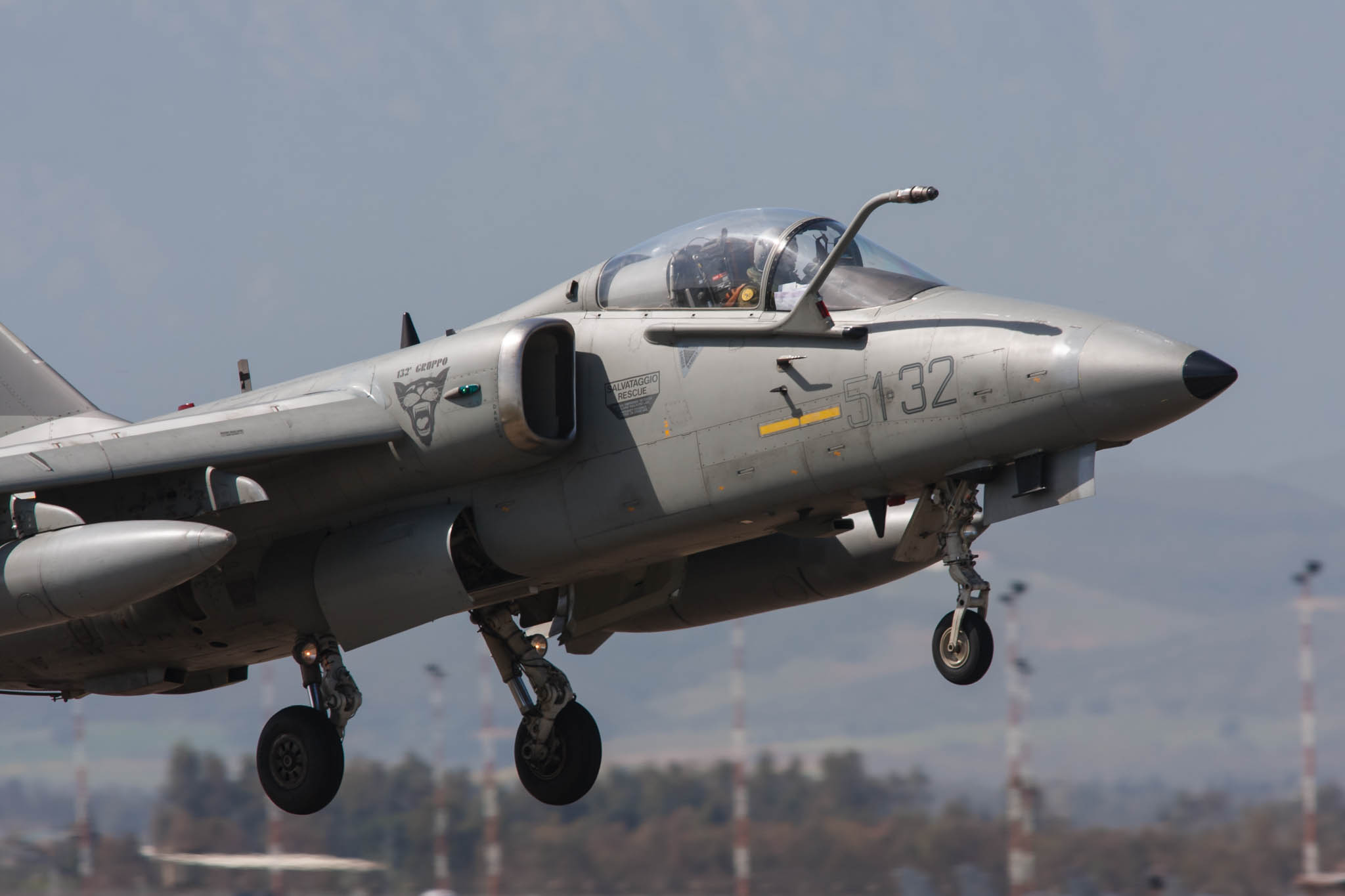 |
The AMX has only just returned to service following a grounding order in December 2007 due to persistent problems with the cockpit canopy.
|
Left to right: Fiat G-222VS (MM62217) of 14° Stormo from Pratica di Mare. The G-222VS is used in the signals intelligence (ELINT/SIGINT) role. For logistical reasons this was the only aircraft with OpFor to operate from Decimo'. Operating in the Sardinia area it could be on task in ten minutes from Trapani it would have taken 40 minutes.
A Falcon 20EW (G-FRAW) operated by civilian company FR Aviation was used by the Coalition forces throughout the exercise in the electronic warfare and jamming role.
|
In Conclusion
 Col Capelli, Director of Operations was based at Decimo' for the exercise, "My role, with my staff, is to coordinate all the activities. We plan the whole exercise, we setup the meetings and prepare all the documents." Planning started nine months ago with the initial planning conference. He was clearly pleased with all aspects of the exercise. "There have been no major problems with the exception of the weather, which has caused some COMAO's to be cancelled for safety reasons."
Col Capelli, Director of Operations was based at Decimo' for the exercise, "My role, with my staff, is to coordinate all the activities. We plan the whole exercise, we setup the meetings and prepare all the documents." Planning started nine months ago with the initial planning conference. He was clearly pleased with all aspects of the exercise. "There have been no major problems with the exception of the weather, which has caused some COMAO's to be cancelled for safety reasons."
This year Spring Flag was held a month earlier than in previous years making it more vulnerable to poor weather. Out of the 373 missions planned from Decimo' only 212 (63%) were flown due to adverse weather conditions in the operational areas. The poor sea state due to high winds was also a factor. This would have it made it very difficult to rescue a pilot who was forced to eject over the sea. OpFor at Trapani fared a little better being able to fly 87% of its planned 137 missions.
Despite the cancellation of some COMAO's it did not stop pilots from continuing to train. Detachment commanders from each nation would after or in place of a cancelled COMAO's, meet to organise small scale aerial battles. SF08 was an ideal opportunity for Dissimilar Air Combat Training (DACT), where pilots of different types of aircraft can fly against each other in one versus one or two versus two scenarios.
Following completion of the exercise on April 17 a VIP and media day was scheduled with over 100 journalists invited. Lt Col Alessandro Alfonsi, Press Officer and Chief of Media Operation Centre (MOC) was very keen to utilise the media in all its forms, including TV, to demonstrate to the Italian people the value and necessity for such exercises. No live weapons are used and the disruption to civilian life in Sardinia is kept to a minimum, "We have nothing to hide", said Lt Col Alfonsi. Last year there were some small protests at Decimo' air base this year none were reported, which is testimony showing how MOC staff had successfully proven their case.
The exercise did not only come under the scrutiny of the media. Official observers from; Algeria, Brazil, United Arab Emerates, Finland, Jordan, India, Kuwait and Romania attended to similarly learn how large scale aerial exercises are run.
Spring Flag 2008 was once again deemed to have been a success. Personnel from all participating nations were able to test their methods and skills in an environment that came as close to a live situation as is possible and without a live weapon being fired. With the updating of technology, methods have to change and lessons learned. Consequently on-going training for those directly involved in peace keeping or peace making operations is essential. The AMI's Spring Flag exercise remains perfect for procedures and standards to be developed and maintained. |
Decimomannu, an ideal location to hold a large scale air exercise.
Decimomanu air base has been utilised by NATO forces for many years. In 1970 it became known as the Air Weapon Training Installation (AWTI). It has now an Air Combat Manoeuvring Installation (ACMI) for aircraft fitted with an Airborne Instrumentation Sub-system (AIS) Pod, which is essentially an electronic pod that transmits a package of information regarding the flight of the aircraft, such as altitude, speed, heading, G and angle of attack etc. All these data are received on the ground for analysis. It is possible to follow air to air combat in real time very accurately within 15 feet (4.6m) and when the flight has ended the data is used extensively during debriefing.
Also situated in Sardinia are some air-to-ground ranges. The Electronic Warfare Instrumented Training Range (EWITR) system is situated at the Poligono Interforze Salto di Quirra (PISQ) aircrew training range at Perdasdefogu. Built in 2005 this range has the latest generation of threat radar simulators and master control stations for aircrew training and tactics development. There are other military ranges situated at Capo Teulada and Capo Frasca in Sardinia. The air to air aerial battles are flown in a military training area over the sea to the east of the island.
The Italian Air Force in action at Spring Flag |
4° Stormo were attending Spring Flag for the second time with the EF2000 Typhoon. Their main objectives for the exercise were to; train crews during complex operations and to improve the pilots understanding of the aircraft flight characteristics. They also wanted to improve the Standard Operative Procedures and verify the EF2000 Typhoon Tactical Handbook.
Left to right: The latest Typhoons delivered now equipped with the PIRATE (Passive infrared Airborne Track Equipment) IRST (Infrared Search and Track System). It is mounted on the left side of the fuselage, forward of the windscreen. In an air-to-surface role, it is used for target identification and acquisition. It also provides a navigation and landing aid. PIRATE is linked to the pilot's helmet mounted display. The first Typhoon with PIRATE-IRST was delivered to the AMI in August 2007.
EF2000 Typhoon (MM7284 '4-21' and two images of MM7286 '4-2') of 4° Stormo/9° Gruppo from Grosseto. The last image shows the aircraft still covered in a coating of orange sand after its sortie on day 5. During the day before rain containing sand carried from the Sahara Desert had fallen on all the aircraft in the flight line. |
Left to right: EF2000 Typhoon (MM7287 '4-3', MM7284 '4-21' and MM7285 '4-16').
36° Stormo were attending Spring Flag for the first time with their 'new' Typhoons. EF2000 Typhoon (MM7276 '36-01') one of three 36° Stormo/12° Gruppo aircraft from Gioia del Colle where they are tasked with in the Air Defence role including QRA.
|
| The Tornado IDS (MM7015 '6-32') returning to Decimo'. |
6° Stormo from Ghedi participated with six PA200 Tornado IDS (Interdictor/Strike) deploying from their home base of Ghedi. The Tornado IDS is equipped with the Thomson TRT-Defence CLDP (Convertible Laser Designator Pod) and can be used for day and night reconnaissance and target identification.
Left to right: PA200 Tornado IDS (MM7006 '6-31' x2, MM7011 '6-1'3 and MM7035 '6-27'). |
Left to right: PA200 Tornado IDS (MM7006 '6-31') being prepared by groundcrew in the rain. PA200 Tornado IDS (MM7011 '6-13' and MM7035 '6-27').
|
The AMX was flown in the strike role during SF08, two AMX departed after day 5 and so did not take part in the night flying element.
The AMX has only recently returned to service following a grounding order in December 2007. The AMX has had a series of problems associated with the cockpit canopy, which has detached in flight. In October 2005 an AMX crashed at Decimo' during landing which was attributed to a faulty canopy, the pilot ejected safely.
Left to right: AMX's (MM7132 '51-01' x3 and MM7159 '51-10'). |
Left to right: AMX's (MM7133 '51-32' x3 and MM7146 '51-25').
|
VIP's made brief visits throughout the exercise in a number of aircraft.
Left to right: A319CJ Airbus (MM62174) AMI 306° Gruppo based at Rome-Ciampino.
Dornier Do-228-212 (MM62158 'E.I.103'). Three Do-228 entered service with the Esercito in 1991 and are based at Viterbo with 28° Stormo.
Piaggio P.180 Avanti (MM62199) of 14° Stormo, 71° Gruppo based at Pratica di Mare.
|
A special thank you for their direct assistance in the preparation of this article must go to;
Col Luca Capelli, Director of Operations,
Lt Col Alessandro Alfonsi, Press Officer and Chief of Media Operation Centre (MOC),
Lt Col Riccardo Bartolini (Chief Safety Officer) and the MOC staff who were perfect escorts making sure we were kept safe when being afforded access to as many locations as possible around the air base. |

